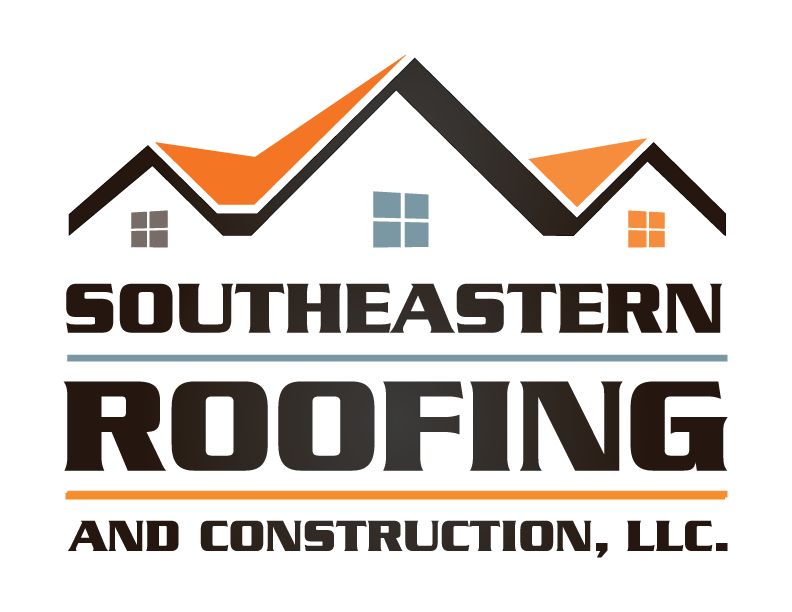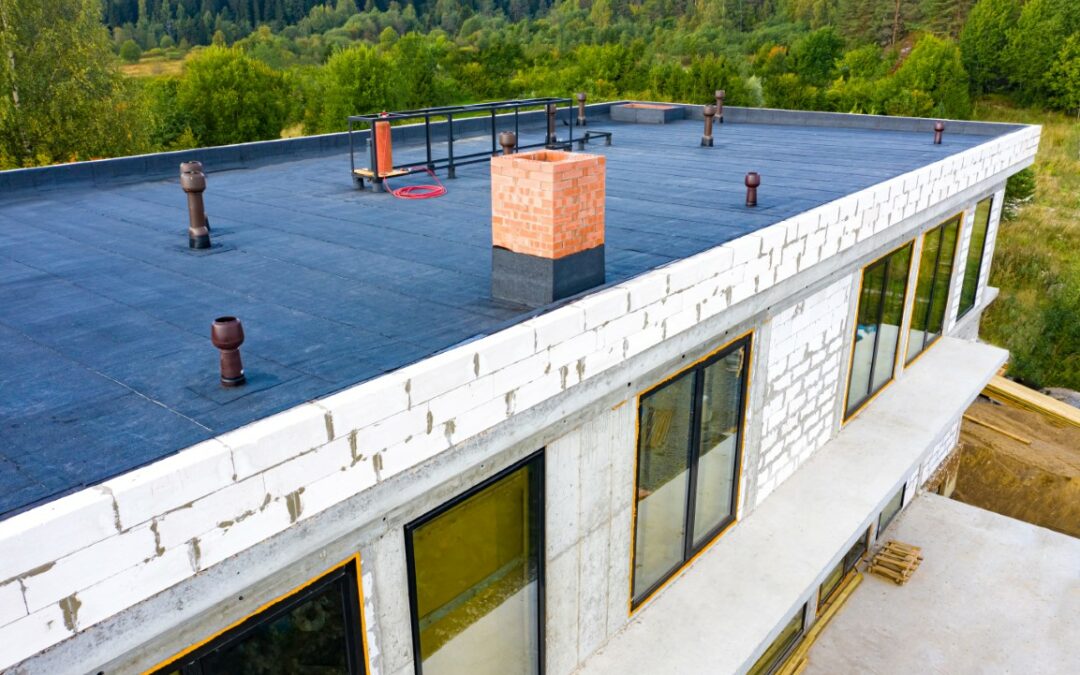Are you wondering why flat roof replacement can be so costly? Well, let us enlighten you.
We’ve delved into the world of roofing and discovered the truth behind the hefty price tag. From the materials required to the labor expenses and even the permits and inspections, numerous factors contribute to the overall cost.
So, if you’re looking for an experienced perspective on why flat roof replacement is pricey, you’ve come to the right place.
Key Takeaways
- The cost of flat roof replacement is influenced by the choice of roofing materials, with high-quality options like metal or slate being more expensive but durable in the long run.
- Labor expenses are a significant factor in the high cost of flat roof replacement, as skilled workers require time and effort for the specialized installation process.
- Removal and disposal fees add to the overall expense of flat roof replacement, as the process of removing existing materials and disposing of them properly can be labor-intensive and costly.
- Structural repairs are necessary before flat roof replacement to ensure the integrity of the new roof, and the complexity of these repairs can impact the overall cost.
Material Costs
One of the main factors contributing to the high cost of flat roof replacement is the significant expense of materials. When it comes to roofing options, there are various materials available, each with its pros and cons.
The durability factor plays a significant role in determining the cost of materials. For example, if you opt for high-quality materials like metal or slate, you can expect to pay a higher price. These materials are known for their longevity and resistance to harsh weather conditions.
On the other hand, more affordable options like asphalt shingles may require more frequent replacements due to their lower durability. Ultimately, the cost of materials for flat roof replacement depends on the specific roofing option chosen and the desired level of durability.
Labor Expenses
To further understand the high cost of flat roof replacement, let’s delve into the significant expenses associated with labor.
When it comes to labor expenses, there are a few key factors that contribute to the overall cost.
Firstly, equipment rental is often necessary for completing the project. Roofing professionals require specialized tools and machinery to efficiently remove the old roof and install the new one. These equipment rentals can add up and significantly impact the final bill.
Secondly, the project timeline plays a crucial role in labor expenses. Flat roof replacement is a labor-intensive task that requires skilled workers to dedicate a significant amount of time and effort. The longer the project takes, the more labor costs will accumulate. Therefore, it’s essential to ensure efficient planning and execution to minimize labor expenses.
Removal and Disposal Fees
Additionally, another significant expense that contributes to the high cost of flat roof replacement is the removal and disposal fees. When replacing a flat roof, it’s necessary to remove the existing materials, which can be a labor-intensive and time-consuming process. This requires the expertise of roofing contractors who charge fees for their services. The complexity of the removal process can also affect the cost, especially if multiple layers of roofing materials need to be removed.
Furthermore, the disposal of these materials can be costly, as they often need to be transported to specialized facilities for proper disposal. Moreover, environmental considerations play a role in the disposal fees. Many roofing materials contain hazardous substances, such as asbestos, which require special handling and disposal procedures to ensure environmental safety. The additional expenses incurred for proper disposal contribute to the overall cost of flat roof replacement.
It’s important to choose a reputable roofing contractor who’s knowledgeable about these environmental considerations and can handle the removal and disposal process in a responsible and compliant manner. While removal and disposal fees may add to the overall cost, it’s a necessary expense to ensure the safety and integrity of the new flat roof installation.
Structural Repairs
In terms of structural repairs, we need to assess the condition of the underlying framework before proceeding with a flat roof replacement. This step is crucial because it allows us to determine the extent of any damage or deterioration that may have occurred over time. Once the assessment is complete, we can then develop a repair plan that addresses the specific issues identified.
Repair techniques will vary depending on the severity of the damage, but may include reinforcing weakened areas, replacing damaged sections, or even strengthening the entire structure. It’s also important to implement proper maintenance strategies to prevent future damage and prolong the lifespan of the roof. Regular inspections and proactive repairs can help identify and address potential problems before they worsen, saving both time and money in the long run.
Permits and Inspections
When it comes to flat roof replacement, obtaining permits and undergoing inspections can significantly contribute to the overall cost. Regulatory red tape is a common hurdle, as different cities and municipalities have varying requirements and processes for obtaining permits. These permits are necessary to ensure that the replacement is done in compliance with safety standards and building codes. Inspections are also conducted to verify that the work meets these standards, adding a layer of cost and time to the project.
Regulatory Red Tape
One of the major factors contributing to the high cost of flat roof replacement is the extensive process of obtaining permits and undergoing inspections. Regulatory red tape, such as permit delays and legal requirements, can significantly add to the time and expenses involved in replacing a flat roof.
Before starting any construction work, it’s essential to obtain the necessary permits from the local authorities. This process often requires submitting detailed plans and specifications, which can be time-consuming.
Additionally, inspections are typically required at various stages of the project to ensure compliance with building codes and regulations. These inspections can further delay the replacement process and may require adjustments or corrections to be made.
While these regulatory measures are in place to ensure safety and quality, they can undoubtedly contribute to the higher cost of flat roof replacement.
Safety and Compliance
To ensure safety and compliance, obtaining the necessary permits and undergoing inspections is a crucial part of the flat roof replacement process. Compliance risks and safety precautions must be taken into consideration to prevent accidents and ensure that the project meets all necessary regulations.
When it comes to compliance risks, failing to obtain the required permits can result in penalties and legal issues. It’s important to research and understand the specific permits needed for your area and project before starting the replacement. Additionally, inspections play a vital role in ensuring that the installation is done correctly and up to code. Inspectors will examine the materials, construction methods, and overall quality of the work to verify compliance with safety standards.
By following these safety precautions and obtaining the necessary permits and inspections, you can mitigate potential risks and ensure a successful flat roof replacement.
However, there are additional factors that contribute to the high cost of this process, which we’ll discuss next.
Additional Factors
When it comes to flat roof replacement, several additional factors can contribute to the overall cost.
One of these factors is the expenses associated with materials. Flat roofs require specialized materials that are often more expensive than those used for pitched roofs. Additionally, labor costs can be higher due to the complexity of working on a flat surface.
Material Expenses
Material expenses for flat roof replacement can significantly impact the overall cost of the project. When it comes to roofing options, there are various materials available, each with its price range.
Factors such as durability, weather resistance, and aesthetics should be considered when choosing the right material. For example, asphalt shingles are a popular and affordable option, but they have a relatively shorter lifespan compared to other materials like metal or tile.
Metal roofs, on the other hand, are more expensive upfront but can last significantly longer, making them a cost-effective choice in the long run. Additionally, other factors such as insulation, underlayment, and flashing materials can add to the overall material expenses.
It’s important to carefully consider these lifespan considerations and material options to make an informed decision that meets both your budget and long-term needs.
Labor Costs
Moving on to labor costs, there are additional factors that contribute to the overall expense of flat roof replacement. When it comes to roofing techniques, the installation process for flat roofs requires specialized skills and experience. The labor involved in replacing a flat roof isn’t just about tearing off old materials and installing new ones. It also includes tasks such as removing and replacing insulation, addressing any underlying structural issues, and ensuring proper drainage.
Additionally, the complexity of the installation process can vary depending on the type of flat roof being replaced, whether it’s a built-up roof, modified bitumen, or single-ply membrane. All these factors contribute to the labor costs involved in flat roof replacement. With these additional considerations, it becomes clear why labor costs are a significant part of the overall expense.
Speaking of costs, another aspect that adds to the expense of flat roof replacement is the structural complexities involved.
Structural Complexities
The structural complexities of flat roof replacement add significant factors to the overall expense.
When it comes to replacing a flat roof, several additional factors need to be considered. One of these factors is the type of roofing technique that will be used. Different roofing techniques require different materials and labor, which can impact the cost of the replacement.
Another factor to consider is the long-term benefits of the replacement. While a flat roof replacement may be costly upfront, choosing a high-quality material and installation method can result in long-term cost savings by reducing the need for future repairs and maintenance.
It’s important to carefully consider the structural complexities of flat roof replacement to ensure that you’re making a sound investment in the longevity and durability of your roof.
Conclusion
Well, folks, it turns out that replacing a flat roof is no walk in the park.
The costs add up faster than you can say ‘Ouch!’ From the pricey materials to the labor expenses and structural repairs, it’s enough to make your head spin. And let’s not forget about those pesky permits and inspections that can drain your wallet even further. So, next time you’re considering a flat roof replacement, be prepared to shell out some serious dough. But hey, at least you’ll have a roof over your head, right?

